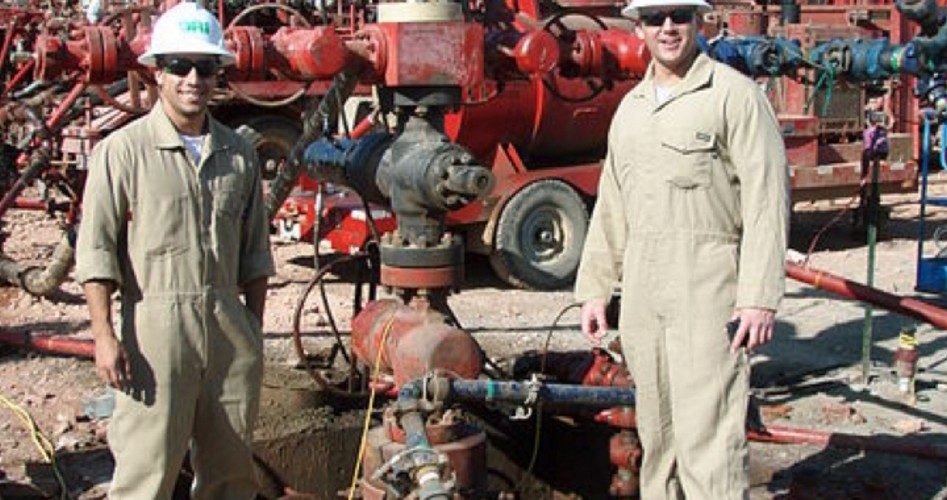
The U.S. Department of Energy (DOE) finds that chemicals used in oil and gas drilling pose no threat to drinking water supplies, contrary to popular claims, according to a new report from the Associated Press (AP). The DOE’s National Energy Technology Laboratory (NETL) is researching a process known as hydraulic fracturing or “fracing” which extracts valuable oil and natural-gas reserves stored in shale rock formations more than a mile below Earth’s surface. The U.S. Energy Information Administration credits recent advances in fracing technology with rejuvenating the U.S. natural-gas industry and freeing the nation from dependence on foreign sources. NETL’s current study focuses on a site in western Pennsylvania, southwest of Pittsburgh, in one of the largest shale formations in the nation, the Marcellus Shale Play.
Yet drillers must suspend their triumph over environmentalist claims that fracing leaches toxic gases and chemicals into groundwater, posing treacherous public health hazards. The same day AP released its article on the “landmark federal study,” NETL published its Statement on Reported Fracking Study, which tells a different story. “We are still in the early stages of collecting, analyzing and validating data from this site. While nothing of concern has been found thus far, the results are far too preliminary to make any firm claims,” states NETL. “We expect a final report on the results by the end of the calendar year.”
NETL’s study is hardly the first of its kind. Hydraulic fracturing has been used for more than 60 years and is rigorously regulated by both federal and state laws. In 1995, Carol Browner, then-administrator of the U.S. Environmental Protection Agency (EPA), announced that investigations of fracing in Alabama between 1989 and 1993 “failed to show any chemicals that would indicate the presence of fracturing fluids” in drinking water. U.S. Representative Glenn Thompson (R-Pa.) defended fracing in a July 2010 address to Congress, stating, “The safety is documented with zero confirmed cases of groundwater contamination in 1 million applications” in its 60-year history.
That seemed to change in December 2011 when the EPA issued a draft analysis declaring fracing the possible culprit for groundwater contamination in Pavillion, Wyoming. Though the EPA emphasized its findings specific to the unique fracturing techniques used in Pavillion, environmentalists hailed the announcement as a breakthrough in the fracing debate. However, the Wyoming Water Development Commission and the state’s Governor Matt Mead quickly debunked the EPA’s report, calling it “scientifically questionable,” accusing EPA analysts of violating their own research protocols and emphasizing the need for further testing. Last month, the EPA turned the still-unresolved investigation over to the government of Wyoming.
The dearth of contamination cases is hardly surprising. Fracing drills for natural gas trapped in shale deposits 5,000 or more feet below the surface, while water tables are rarely deeper than 400 feet. As explained in the Department of Energy’s Modern Shale Gas Development in the United States: A Primer, “Ground water is protected during the shale gas fracturing process by a combination of the casing and cement that is installed when the well is drilled and the thousand feet of rock between the fracture zone and any fresh or treatable aquifers.” Moreover, among federal laws governing shale gas development it names the Safe Drinking Water Act, the Clean Air Act, the Clean Water Act, and the National Environmental Policy Act. In addition to these, “states have broad powers to regulate, permit and enforce all activities — the drilling and fracture of the well, production operations, management and disposal of wastes, and abandonment and plugging of the well.” The DOE’s Primer calculates less than one well in 200,000,000 would leak fracturing fluids into an underground source of drinking water under such strict monitoring.




